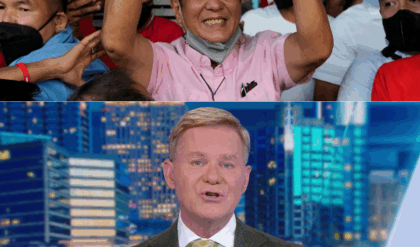
A couple of weeks ago, in a reader mailbag, I was asked a series of questions about the New Jersey Devils’ pursuit of a goaltender.
Many of the pitches hinged on the Devils’ willingness to trade their first choice, No. 10 overall, in the 2024 draft, and on Monday, general manager Tom Fitzgerald told NHL.com that he would consider doing so for the right return. That, by the way, is the logical, correct response.
The Devils made the playoffs two seasons ago, taking a giant organizational step forward, only to fall back this season, for a lot of reasons. Injuries to key personnel such as Dougie Hamilton played a role, but the larger, obvious, overriding concern was subpar goaltending.
It’s been an uneven roller-coaster ride between the pipes for the Devils, really ever since Martin Brodeur stepped away, though Cory Schneider had an effective run when he was healthy. But now it’s time to find someone who, even if he can’t replace Brodeur, at least gives the Devils a fighting chance in the Metropolitan, a division where, after the Rangers’ Igor Shesterkin, a lot of teams have a lot of question marks to answer in goal this summer.
But let’s focus on the Devils for now, because they are in the enviable position of having two young core pieces emerging on the blue line in Luke Hughes and Simon Nemec, and currently, as configured, they have a youthful 1-2-3 punch down the middle consisting of Nico Hischier, Jack Hughes and Dawson Mercer.
The Devils were unwilling to trade Mercer this past trade deadline for help between the pipes, which presumably means they aren’t willing to trade him now that the offseason is upon us. But with Hamilton returning, and with Hughes and Nemec getting a year of experience, the Devils can live without a draft pick that, at best, cracks the lineup in a couple of years and maybe starts to make an impact in 2028.
Organizationally, you can only chant that painstaking, build-through-the-draft mantra until you get to this stage in your development. At that point, it’s time to take that valuable trade chip and find a goaltending solution.
So … where to spend it?
There are four premium goaltenders to target in the offseason, and you could probably get any of the four for that No. 10 pick. Realistically, with a few restrictions and quibbles, their targets should be, in order: Jacob Markstrom of Calgary, Linus Ullmark of Boston, John Gibson of Anaheim and Juuse Saros of Nashville.

Saros is at the bottom of the list, not because of ability but because he will be the most challenging to pry loose. Nashville is trying to get him signed to an extension, and my belief is it will happen and that, internally, they’ve decided that their goaltender of the future, Yaroslav Askarov, isn’t ready to be an everyday starter in the NHL, and that they had so much success in the final third of last season that they don’t want to take a deliberate backward step now, which is what would happen if they traded Saros. There appears to be a desire on both sides to get an extension done, and usually that means it’s going to happen.
Either way, getting to the bottom of what the Predators will do with Saros will also be an easy conversation for Fitzgerald to have because the GM in Nashville is Barry Trotz. During the 1998-99 season, Fitzgerald was Nashville’s original captain on the expansion Predators and played four seasons for Trotz. There’s history and familiarity there. So Fitzgerald will check in, and probably has already, and if — against long odds — Saros ultimately becomes available and the No. 10 pick gets it done, he’ll have to weigh what Saros brings to the mix against the other three trade candidates, all of whom are attractive on some levels and worrisome on others.
The surest solution is the one they talked about before the trade deadline: landing Markstrom from Calgary. Markstrom waived his no-trade to go to New Jersey back then, so presumably he’d do so again. He’s 34, signed for two more years at $6.2 million, and at 6-foot-6, is a massive man who, among the goalies we’re discussing here, is physically the one most equipped to handle a true No. 1 goaltender’s workload.
There are any number of ways of assessing goalie performance this year, but Markstrom, until the final month of the season, when the Flames sunk fast after trading away all their pending UFAs, was having an exceptional season. With apologies to Mackenzie Weegar, he was their MVP.
Ullmark might waive his no-trade to go to the Devils, but only if they signed him to an extension. He’d be a 55-game-maximum player, which is fine, if you want Jake Allen to play the remaining third of the schedule.
-ep.jpg)
Gibson is the most problematic trade candidate, because he makes the most money ($6.4 million for three more years) and hasn’t played at a consistently high level for a while. Playing on a good team would make him a bounce-back candidate but the other two goalies are surer things.
And if the Devils’ goal is to not only make the playoffs, but then do some damage when they get there, then Markstrom, a reliable workhorse, seems like the best option. Calgary can probably live with trading him, and maybe even taking a small percentage of the contract back to land that draft pick, which would give them consecutive choices — No. 9 and No. 10 — and maybe means they can get the center they want, plus Tij Iginla — and if Iginla is off the board, whatever defensive prospect happens to fall through the cracks.



